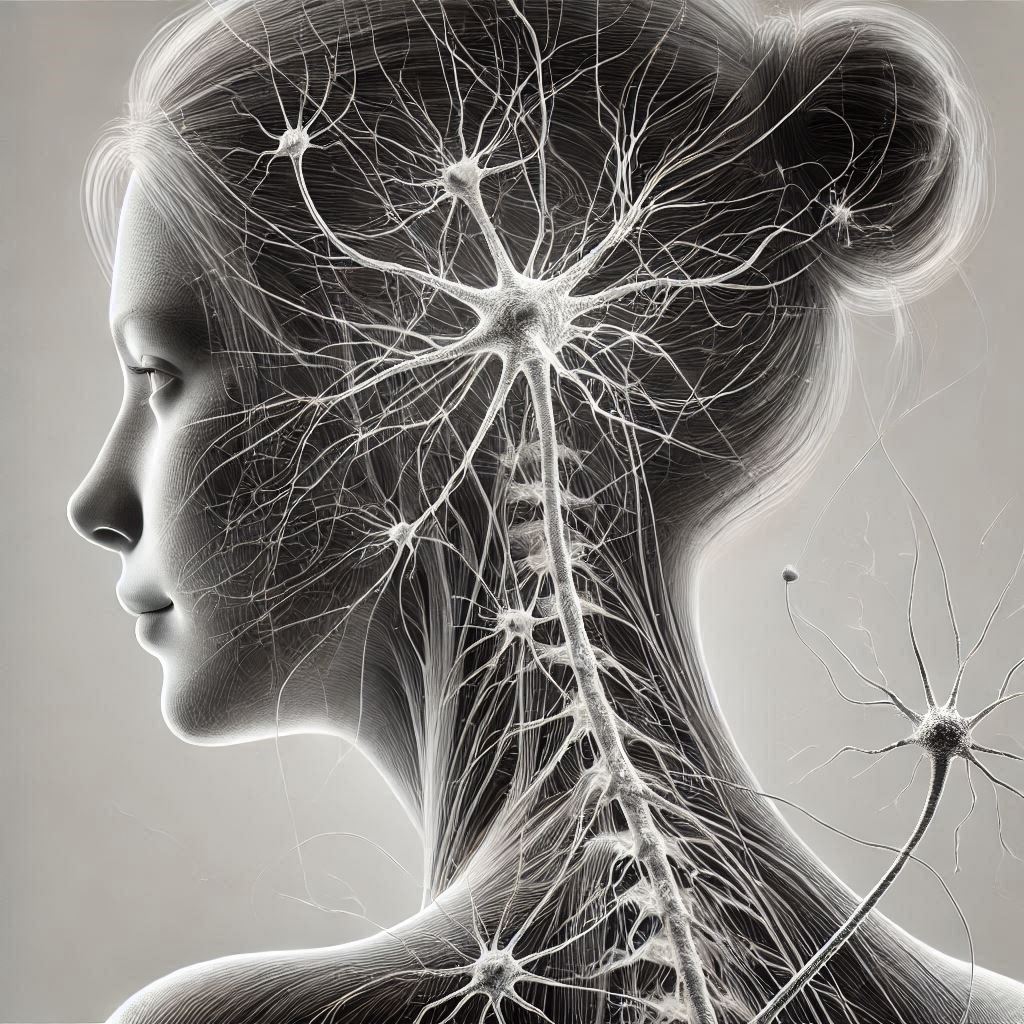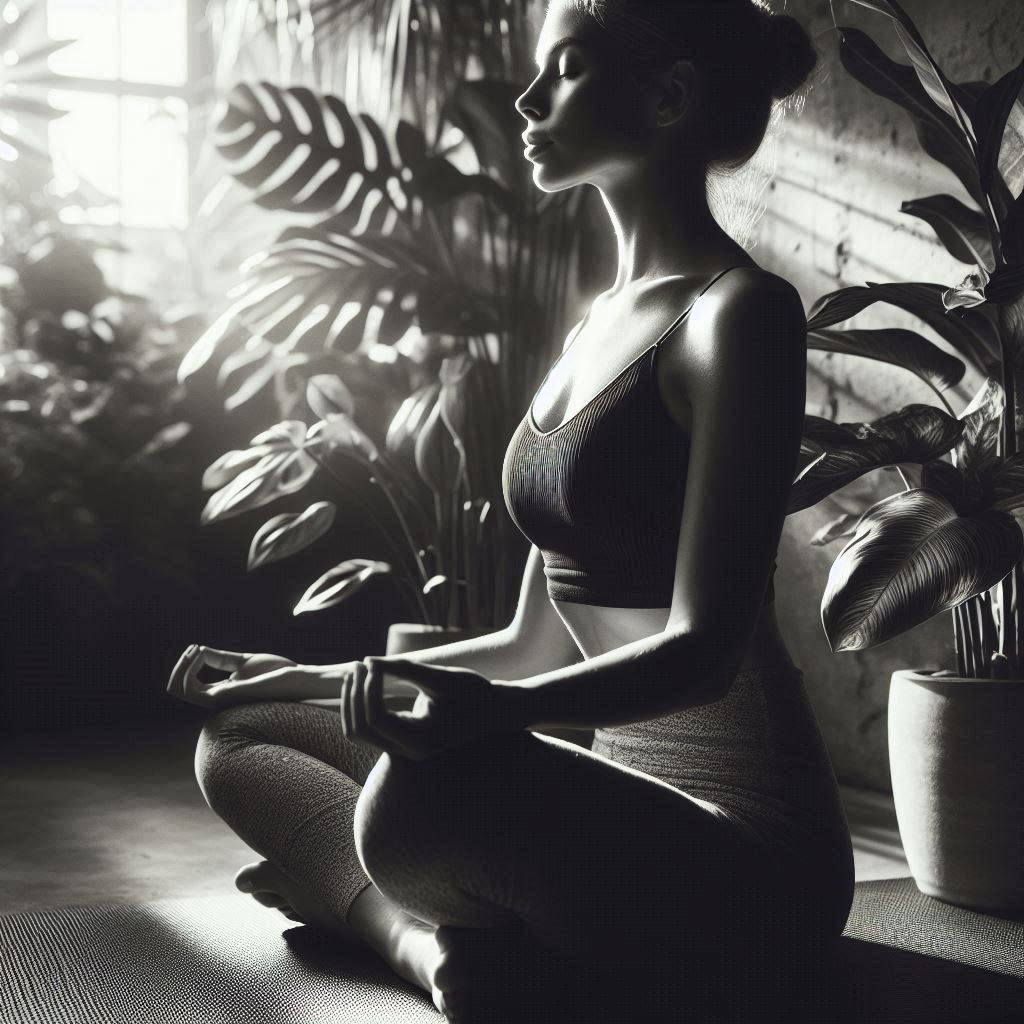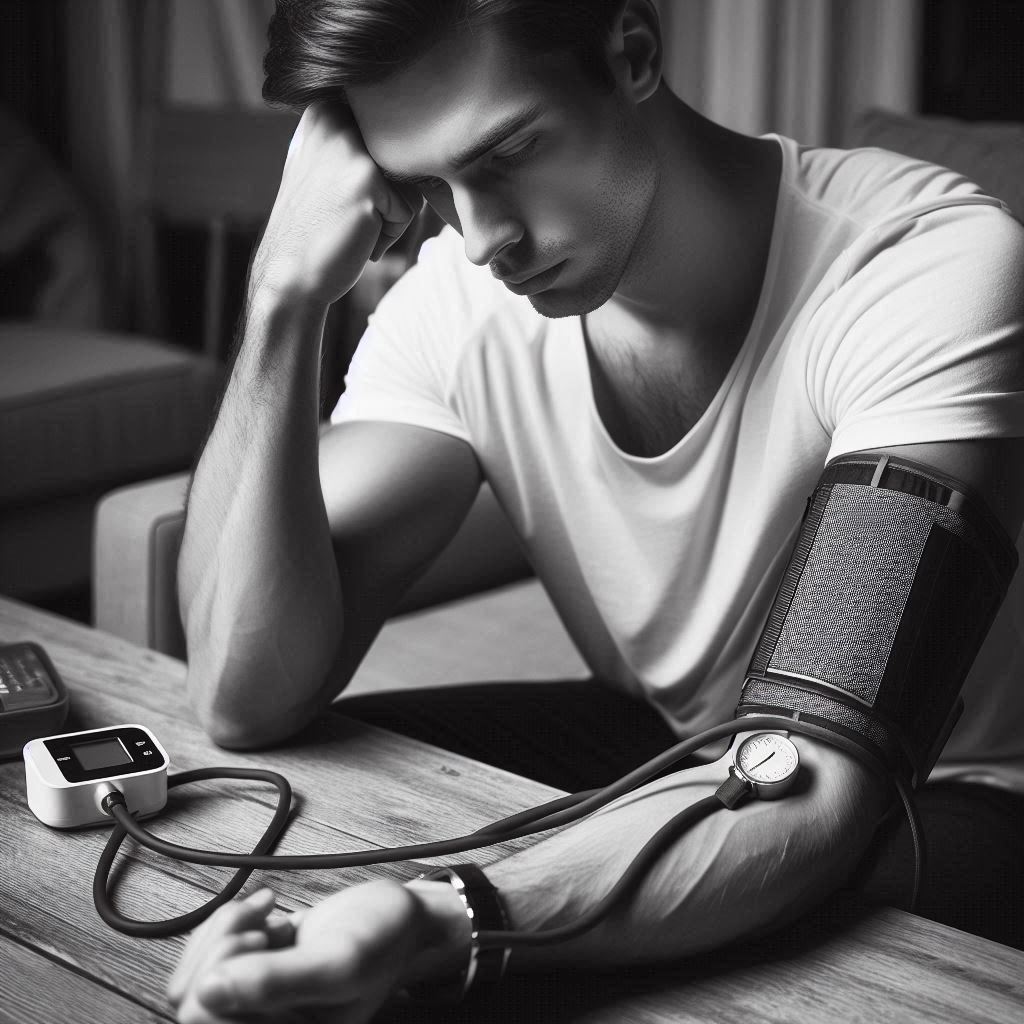Ever felt like your heart is racing and you can’t breathe, all while you’re sitting in a room with no obvious danger?
You might be experiencing a panic attack.
In this post, we’ll explore common signs of a panic attack and offer some tips on how to handle them. Understanding these symptoms is the first step to regaining control and easing your mind. So, let’s dive into how you can spot a panic attack and take charge of your well-being.
Common Symptoms of Panic Attacks
Panic attacks can be incredibly overwhelming, making it hard to understand what’s happening to your body and mind. Grasping the typical symptoms is crucial to identify when you’re experiencing one. Let’s look closely at what to expect during a panic attack, starting with the physical, emotional, and cognitive symptoms.
Physical Symptoms
When a panic attack strikes, it’s like your body suddenly shifts into overdrive. You might notice:
- Rapid Heartbeat: Your heart pounds in your chest, making you feel as if it’s racing.
- Shortness of Breath: It can feel like you’re trying to breathe through a straw, leading to a sense of choking.
- Chest Pain: The tightness or pain in your chest resembles a heart attack, which adds to the fear.
- Dizziness: Feeling lightheaded or dizzy is common, and it might seem like the room is spinning.
- Sweating: You may find yourself covered in sweat, even if the room is cool.
These symptoms can be alarming, but they’re your body’s natural reaction to fear or stress, even when there’s no immediate danger.
Emotional Symptoms
The emotional rollercoaster during a panic attack is intense. It often includes:
- Fear and Anxiety: A sudden and overwhelming rush of fear or worry that’s hard to control.
- Sense of Impending Doom: This irrational feeling that something terrible is about to happen can be hard to shake.
These emotions can feel crippling, making it difficult to focus on anything else.
Cognitive Symptoms
Your mind can feel clouded and chaotic during a panic attack. Here are some common cognitive symptoms:
- Confusion: Simple tasks might suddenly seem incredibly complex, leaving you bewildered.
- Disorientation: You may feel disconnected from yourself or your surroundings, like you’re watching from outside your own body.
- Feeling of Losing Control: It can feel like your mind is slipping away, and you’re powerless to stop it.
Understanding these symptoms is like having a roadmap during a hurricane—it’s about weathering the storm and knowing it will pass. Recognizing these signs can help you or a loved one manage panic attacks more effectively, acting as a flashlight in a dark room.
Distinguishing Panic Attacks from Other Conditions
Experiencing a panic attack can be frightening, especially if you are not sure what it is. Many symptoms of panic attacks overlap with other health issues, making it hard to tell them apart. Understanding the differences can help you manage your health better. Let’s explore how panic attacks differ from heart attacks and anxiety attacks.
Panic Attack vs. Heart Attack
It’s easy to confuse a panic attack with a heart attack because they share symptoms like chest pain and shortness of breath. However, there are clear differences to note:
- Chest Pain
- Panic Attack: Often feels like a sharp, stabbing pain that may last only a few minutes.
- Heart Attack: Typically a heavy, crushing pain that might spread to other parts like the arm or jaw.
- Onset of Symptoms
- Panic Attack: Symptoms can come on suddenly and intensely, often triggered by stress or fear.
- Heart Attack: Symptoms might develop more slowly, starting with mild discomfort that worsens over time.
- Duration
- Panic Attack: Usually peaks within 10 minutes and rarely lasts more than 30 minutes.
- Heart Attack: Symptoms last longer and may persist as long as the heart is deprived of oxygen.
When in doubt, it is always safer to seek medical help immediately if you suspect a heart attack.
Panic Attack vs. Anxiety Attack
While these terms are often used interchangeably, they describe different experiences. Understanding their distinctions helps in managing them effectively:
- Triggers
- Panic Attack: Can happen without warning, even during sleep. They are often not linked to a specific cause.
- Anxiety Attack: Usually a response to a perceived threat or stressor, building up gradually.
- Intensity
- Panic Attack: Involves intense episodes of fear that feel overwhelming and can include physical symptoms like heart palpitations and dizziness.
- Anxiety Attack: Manifests as increased worry or tension, potentially lasting longer but generally less intense in physical symptoms.
- Frequency
- Panic Attack: May happen sporadically and unpredictably.
- Anxiety Attack: Often occurs more frequently, depending on stress levels and personal anxiety triggers.
Understanding these differences can not only help in identifying what you are experiencing but also in choosing the right coping mechanisms. Are you prepared for the next time one of these attacks arise? Remember, knowledge is power!
Situational Triggers for Panic Attacks
Understanding what triggers a panic attack can feel like piecing together a puzzle. People often feel blindsided when an attack hits, but there are many situational triggers that can set the stage. Let’s explore how different environments and internal experiences might play a role.
Environmental Triggers
Think about those times you’ve felt overwhelmed in a crowded setting or jumped at a sudden loud noise. These elements are more than just annoyances; they can actually lead to panic attacks for some. Here’s a closer look:
- Crowded Places: Shopping malls, concerts, or even a packed subway can make you feel like the walls are closing in. The sheer number of people can be suffocating, making it hard to breathe or think clearly.
- Loud Noises: Imagine sitting in peace, and suddenly, a car horn blares or a door slams. These unexpected loud noises can send your heart racing, making it feel like you’re in danger when you’re not.
- Specific Locations: Sometimes certain places, like a dentist’s office or a hospital, can trigger anxiety because we associate them with past stress or pain. If being there reminds you of negative experiences, it might set off a panic attack.
Some might wonder, why do these settings cause panic? It’s because our surroundings can have a massive impact on our mental state, similar to how weather affects our mood. Being aware of these triggers can help us manage or even avoid situations that might escalate our anxiety.
Internal Triggers
Not all triggers come from outside. Sometimes, the battle is within us. Our own thoughts, memories, and even physical feelings can lead to a panic attack. Let’s break it down:
- Thoughts: We’ve all experienced those nagging “what-ifs” that spiral out of control. A fleeting worry can snowball into a full-blown panic if we fixate on the worst-case scenario.
- Memories: Picture a vivid memory resurfacing without warning, perhaps of a stressful event. Such memories can be like opening a floodgate of fear and anxiety, thrusting us back into those intense emotions.
- Bodily Sensations: Ever felt your heart skip a beat and suddenly everything seems off? Common sensations like dizziness or a fast heartbeat can mimic the start of a panic attack, tricking your brain into thinking something is wrong.
Understanding these internal triggers is like knowing the weather forecast; it helps in preparing for what might come. By identifying these triggers, you can work on strategies to keep your mind and body grounded.
Being aware of these various triggers allows people to better manage their anxiety. It’s about recognizing what sets off the alarm bells and finding ways to diffuse them before they escalate into a full-blown panic attack.
When to Seek Professional Help
Panic attacks can feel overwhelming and make life difficult. Recognizing when to reach out for professional help is crucial for managing these experiences better. Let’s look at some key moments when consulting a healthcare provider is important.
Frequency and Severity of Attacks
How often are panic attacks happening, and how severe are they?
These questions can be a helpful guide. If you find that panic attacks are becoming a frequent visitor, interfering with daily activities, it’s time to consider getting help. Imagine panic attacks like uninvited guests crashing a party. If they show up once in a blue moon, it might not be a big deal. But if they’re always around, taking over your life, it’s time to act.
Here’s what you might notice:
- Daily Life Impact: Are simple tasks becoming difficult? Like grocery shopping or even just leaving the house?
- Frequency: Are the attacks happening more than a few times a month?
- Intensity: Do they feel like they’re getting worse or lasting longer?
Checking these signs can help you decide whether a chat with a health professional might bring some peace of mind.
Co-occurring Mental Health Conditions
Sometimes, panic attacks don’t travel alone. They might come along with other mental health conditions like depression or anxiety disorders.
Think of it like a chain reaction. One worry sparks another, and suddenly, things feel out of control. In these cases, professional guidance is essential to untangle the mess.
Consider these co-occurring conditions:
- Depression Symptoms: Feeling hopeless or losing interest in activities once enjoyed is a red flag.
- Other Anxiety Disorders: Panic attacks alongside generalized anxiety or social anxiety can compound the stress.
Getting professional help can provide the tools and support to tackle not just the panic attacks, but any accompanying mental health challenges as well. It’s like having a life jacket in stormy seas, offering stability and control when things seem chaotically overwhelming.
Seeking help isn’t just smart—it’s a brave step towards reclaiming your life from the grip of panic attacks. Don’t hesitate to reach out; it’s a sign of strength, not weakness.
Coping Strategies for Panic Attacks
Panic attacks can stop you in your tracks, but knowing how to manage them can make a huge difference. Let’s explore some effective coping strategies that can help you regain control and ease the grip of panic.
Breathing Exercises
Imagine your breath as a soothing wave, washing over you with calm. When panic strikes, one of the first things you can do is focus on your breathing. Deep breathing exercises are simple, but powerful tools to ease anxiety by slowing your heartbeat and lowering stress levels.
- 4-7-8 Breathing: Inhale quietly through your nose for 4 seconds, hold the breath for 7 seconds, and exhale completely through your mouth for 8 seconds. Repeat this cycle a few times.
- Diaphragmatic Breathing: Also known as belly breathing, this technique involves breathing deeply into your diaphragm rather than your chest, which helps you relax.
These exercises create a moment of peace amidst the chaos. Give them a try next time you feel anxiety creeping in.
Grounding Techniques
Think of grounding techniques as anchors, keeping you steady amidst the turbulent waves of panic. These methods help you stay connected to the present moment, easing the intensity of your symptoms.
- 5-4-3-2-1 Technique: Engage your senses to bring yourself back to reality. Identify five things you can see, four things you can touch, three things you can hear, two things you can smell, and one thing you can taste.
- Physical Grounding: Feel your feet on the ground, hug yourself tightly, or dig your toes into the carpet. Physical sensations remind you that you are safe and rooted here in the present.
These tools remind you that you are more than the sum of racing thoughts and heavy breaths.
Seeking Support
No one should face panic attacks alone. Reaching out to others can be a powerful step towards healing. Lean on family, friends, or support groups who can offer a listening ear and a supportive shoulder.
- Talk to Someone You Trust: Sometimes, just having someone to talk to can make a world of difference. Whether it’s a friend, family member, or counselor, sharing your experience can lighten the load.
- Join a Support Group: Connecting with others who understand what you’re going through can provide comfort and practical advice.
Support networks act as lifelines, reminding you that you are not alone. They can provide the encouragement needed to navigate through the storm of panic attacks.
By equipping yourself with these strategies, you can take control and steer through the turbulence of panic attacks with confidence and calm.
Conclusion
Recognizing a panic attack is crucial for managing anxiety effectively. Understanding symptoms like heart palpitations, shortness of breath, and intense fear can help you distinguish a panic attack from other conditions. Awareness empowers you to seek appropriate support and adopt coping strategies.
If you suspect you’re experiencing panic attacks, reach out to a healthcare professional or mental health expert. Their guidance can be vital in developing a personalized treatment plan.
Remember, you are not alone, and help is available. Engage in open discussions about mental health, share your experiences, and consider exploring relaxation techniques or therapy options.
Stay informed, stay connected, and take charge of your mental well-being. What steps will you take today toward better understanding and managing anxiety?








